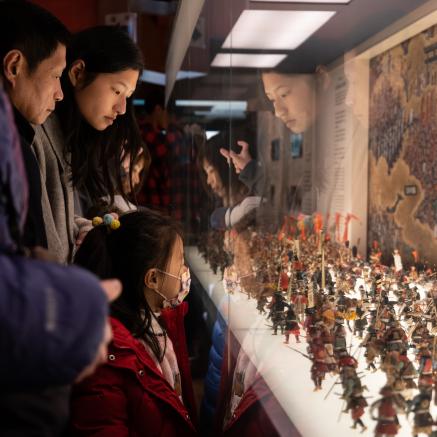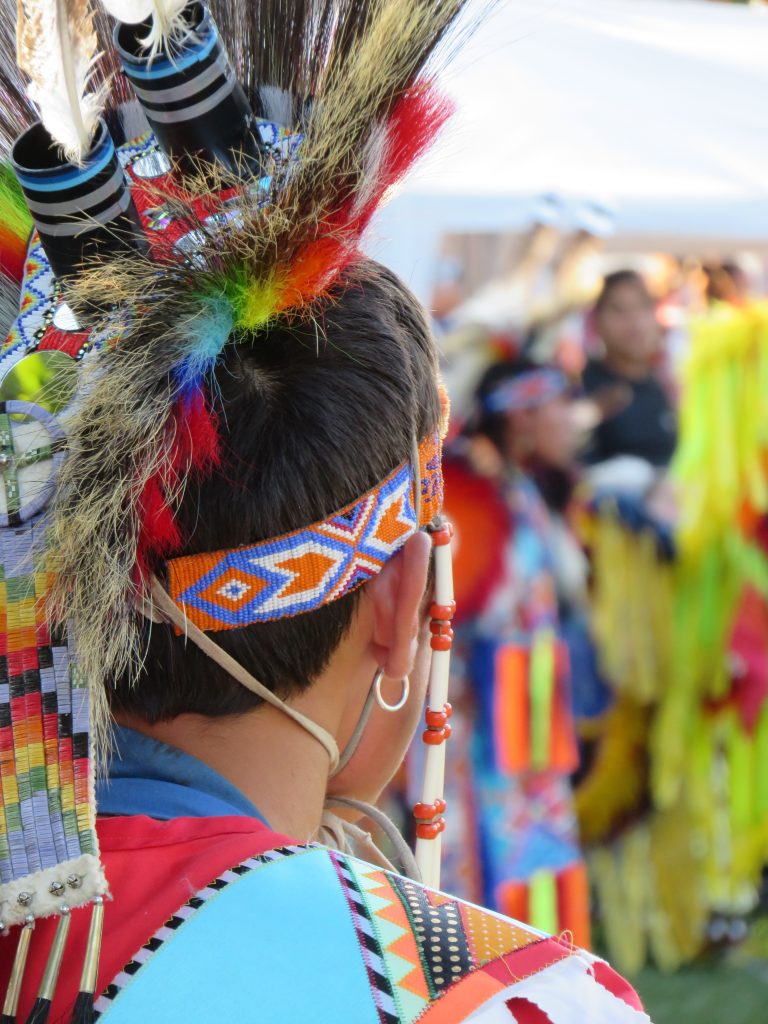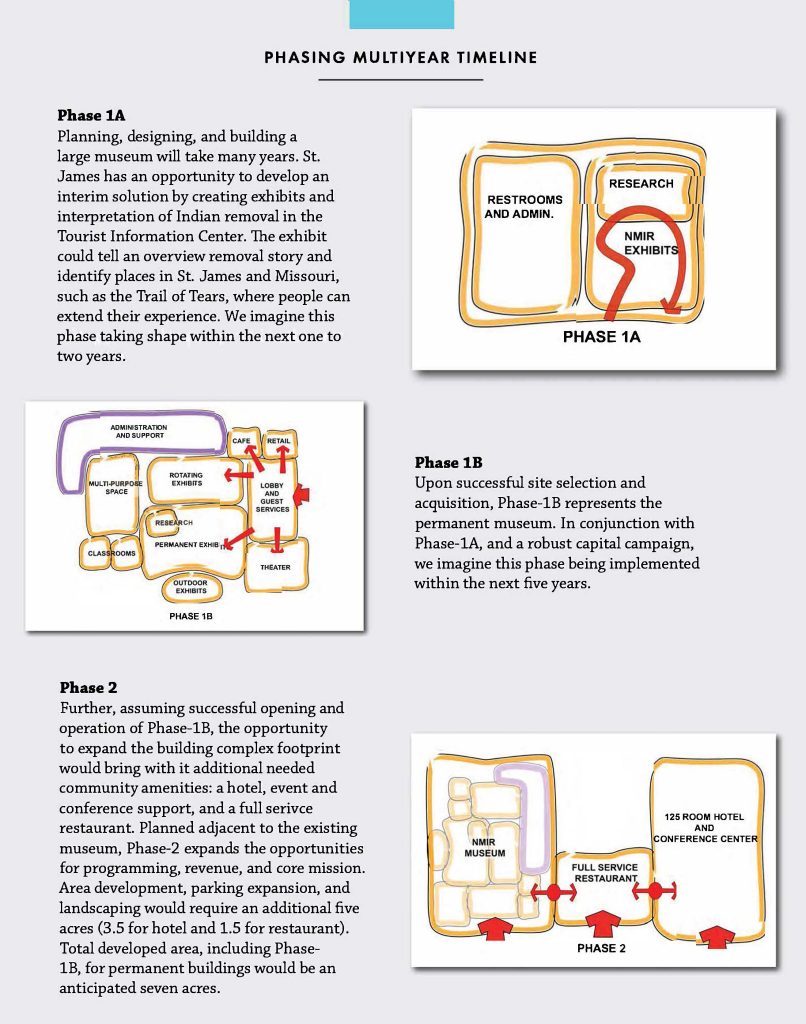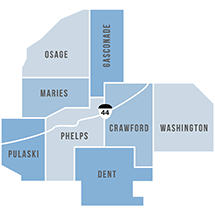Feasibility Study for The National Museum of Indian Removal
The Idea…To Build a World-Class Museum of National Prominence
By focusing on the mostly untold history of the dispossession associated with the colonization of America that lead to the forced removal of the American Indians from their lands, the museum will seek to provide a chronology of events that ultimately ended with the forced removal of the American Indians from their lands. It will document the lasting legacy of these First Americans and celebrate their triumph over adversity and displacement.
The museum will:
- Include Indoor/Outdoor Exhibits & Program Spaces, State-of-the-Art Interactive Technology, Curated Objects, and Multi-sensory Immersion Experiences;
- Provide an Important New Resource for Education & Community Engagement in St. James;
- Stimulate Economic Development through Tourism to St. James, the Meramec Region and the state of Missouri; and
- Serve as a Hub for a Large Heritage Trail through Missouri.
“The Museum will inspire visitors with the story of the resilience of Indigenous People of America — the power of the human spirit to overcome adversity. “


Study Conclusions
This Feasibility Study is but a first step in the overall master planning, design, and construction of the museum, representing a decade (or more) of phased development.
The City of St. James, and its surrounding region, possess sufficient market potential, existing need, and potential growth to support a facility of this type and scope. However, this substantial opportunity comes with a significant capital investment over time, and further presumes that there are key personnel willing to tackle the initial challenge of establishing the parent organization.
Immediate next steps can include: Establishment of an organizational format (ex.: Non-profit, Foundation, Municipal Partnership, etc.) and its governing body. Cultivating an initial relationship with Osage tribe representatives, and possibly allying with the Missouri Trail of Tears Association.
Upon successful completion of which may afford the new organization access to local, state, and federal grant monies to begin to cover operating expenses; further financial support may be available from Tribal Nations and individual donors as well.
The approach of this museum has never been undertaken before. It has the potential to have monumental impacts on the national museum community, not to mention the public’s knowledge of history – and is a challenge worthy of accepting.
“One of the most important messages this museum must express is that First Americans are still here. Inclusion should be at the heart of everything this museum strives to be.”

Community, Stakeholder, and Advisor Engagement
The study was a collaboration between MRPC, local stakeholders, numerous advisors and the PGAV consultant team. (Full listing on page 11 in report.)
Galen Gritts (Cherokee)
Rocky Miller (Cherokee), Missouri Trail of Tears Association President
Travis Owens, representative of the Cherokee Nation
Lisa John, representative of the Chickasaw Nation
Heather Ahtone (Choctaw/Chickasaw), Curator of the First Americans Museum
James Fleming, City Administrator, St. James
Rick Krawecki, St. James Mayor
Sammy Auxier
Dale Martin, Rolla Regional Economic Commission
Kelly Money, St. James Chamber Director
Wesley Swee, The James Foundation
Joy Tucker
Mike Tucker
Robin Ziegler
Bonnie Prigge, MRPC Executive Director
Candace Connell, MRPC Community Development Specialist
PGAV Destinations Consultant Team
Missouri Humanities Council (MH) has awarded a grant of $130,000 to the MRPC in support of the Feasibility Study for the National Museum of Indian Removal. Funding for these grants has been provided by the National Endowment for the Humanities (NEH) as part of the American Rescue Plan Act (ARPA) and the NEH Sustaining the Humanities through the American Rescue Plan (SHARP) initiative.

